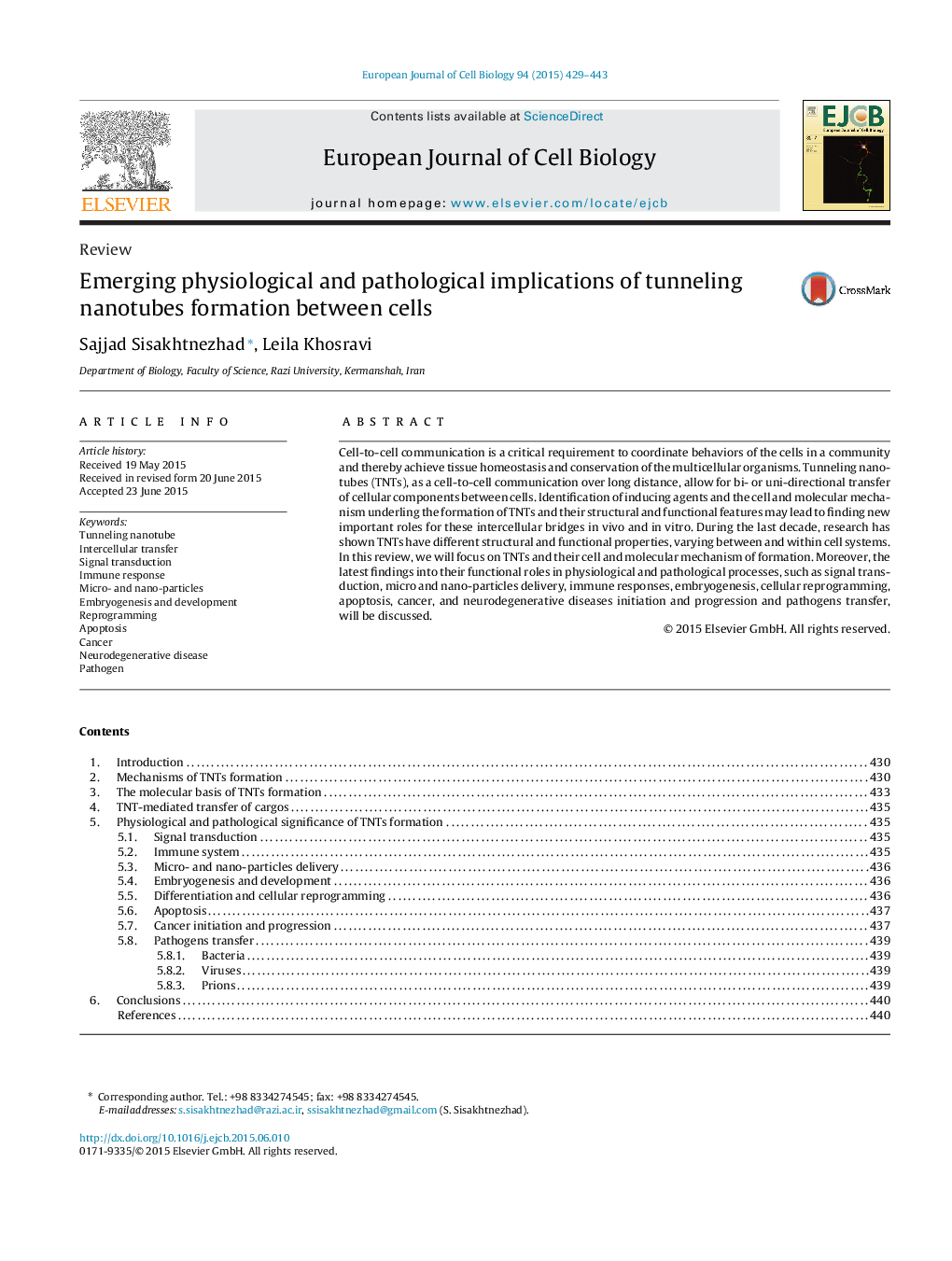| Article ID | Journal | Published Year | Pages | File Type |
|---|---|---|---|---|
| 2178372 | European Journal of Cell Biology | 2015 | 15 Pages |
Cell-to-cell communication is a critical requirement to coordinate behaviors of the cells in a community and thereby achieve tissue homeostasis and conservation of the multicellular organisms. Tunneling nanotubes (TNTs), as a cell-to-cell communication over long distance, allow for bi- or uni-directional transfer of cellular components between cells. Identification of inducing agents and the cell and molecular mechanism underling the formation of TNTs and their structural and functional features may lead to finding new important roles for these intercellular bridges in vivo and in vitro. During the last decade, research has shown TNTs have different structural and functional properties, varying between and within cell systems. In this review, we will focus on TNTs and their cell and molecular mechanism of formation. Moreover, the latest findings into their functional roles in physiological and pathological processes, such as signal transduction, micro and nano-particles delivery, immune responses, embryogenesis, cellular reprogramming, apoptosis, cancer, and neurodegenerative diseases initiation and progression and pathogens transfer, will be discussed.
